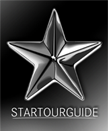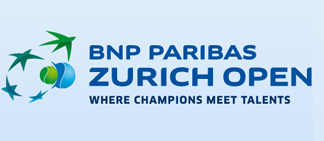

Zurich, Switzerland
Zurich is the largest city in Switzerland, with a population of some 364,500 in the city proper and 1.2 million in the agglomeration area. Zurich is on Lake Zurich, where the lake meets the Limmat River, in the north of Switzerland.
Zurich is situated at 408m (1,339ft) above sea level on the lower (northern) end of Lake Zurich (Zürichsee) about 30 kilometres (19mi) north of the Alps, nestling between the wooded hills on the west and east side. The Old Town stretches on both sides of the Limmat River, which flows from the lake, running northwards at first and then gradually turning into a curve to the west.
Zurich is the largest city of the Swiss Confederation (Switzerland) by land area and population. It is the financial centre of Switzerland and houses the stock exchange and the headquarters of a large number of national and international companies. National and international media agencies as well as most of the national TV channel companies are also located here. Because of the city's close distance to tourist resorts in the Swiss Alps and its mountainous scenery, it is often referred to as the "portal to the Alps".
Zurich has long been known for being clean and efficient. Due to this, it has been continuously ranked as the city with the highest living standard world-wide for many years. However, only for the last ten years has it truly become a fascinating and worthwhile travel destination. This is mostly thanks to the liberalization of the cultural, party and gastronomy sectors.
Most of Zurich's sights are located within the area on either side of the Limmat river, between the Main railway station and Lake Zurich. The churches and houses of the old town are clustered here, as are the most expensive shops along the famous Bahnhofstrasse. The Lindenhof in the old town is the historical site of the Roman castle, and the later Carolingian Imperial Palace. Many museums and art galleries can be found in the city, including the Swiss National Museum and the Kunsthaus. Zurich also hosts one of the most important theatres in the German-speaking world. Zurich has a rich cultural tradition. In addition to high-quality museums and galleries, Zurich has high-calibre chamber and symphony orchestras and several important theatres.
Shopping
For shopping in Zürich there are three different areas in the centre:
Bahnhofstrasse, which runs from the Zürich Train Main station "Hauptbahnhof" right down to the lake. Bahnhofsstrasse is famous for being one of the most exclusive and expensive shopping streets in the world. Here you can get anything from diamond rings to chocolate to fur coats. Globus and Jelmoli are two fiercely competitive department stores, both of whom carry items from many high-end brands. The Bahnhofstrasse is Zurich's main downtown street and one of the world's most expensive and exclusive shopping avenues. In 2011, a study has named the Bahnhofstrasse the most expensive street for retail property in Europe, and the third most expensive worldwide.
Food
Niederdorf, which is the Old Part of Zurich and expands from "Bellevue" by the Lake right to "Central" which is just over the River from the train station. The Niederdorf is more for young people. Aside from a lot of fast food places you will find a lot of trendy clothes stores here.
Löwenstrasse, which runs west of Bahnhofstrasse from the main train station, has lower range shops and a large branch of Migros, a department store chain.
The quintessential Zürich dish is Zürigschnätzlets, veal in a cream and wine sauce. Various kinds of grilled Wurst (sausages) are also popular. These are most often accompanied by boiled potatoes, Rösti, a Swiss potato pancake (grated potato, formed into a pancake then pan fried until crisp in butter or oil) or Chnöpfli, in German sometimes called Spätzle, (small noodle dumplings).
The traditional cuisine of Zurich consists of traditional fare, reflecting the centuries of rule by patrician burghers as well as the lasting imprint of Huldrych Zwingli's puritanism. Traditional dishes include Tirggel - traditional Christmas biscuits made from flour and honey, they are thin, hard, and sweet).
Nightlife
Zurich offers a great deal of variety when it comes to night-time leisure. It is the host city of the world-famous Street Parade, which takes place in August every year.
The most famous districts for Nightlife are the Niederdorf in the old town with bars, restaurants, lounges, hotels, clubs, etc. and a lot of fashion shops for a young and stylish public and the Langstrasse in the districts 4 and 5 of the city. There are authentic amusements: Brazilian bars, punk clubs, HipHop stages, Caribic restaurants, arthouse-cinemas, Turkish kebabs and Italian espresso-bars, but also sex shops or the famous red light district of Zurich.
In the past ten years new parts of the city have risen into the spotlight. Notably, the area known as Zurich West in district 5, near the Escher-Wyss square and the S-Bahn Station of Zurich Hardbrücke.





